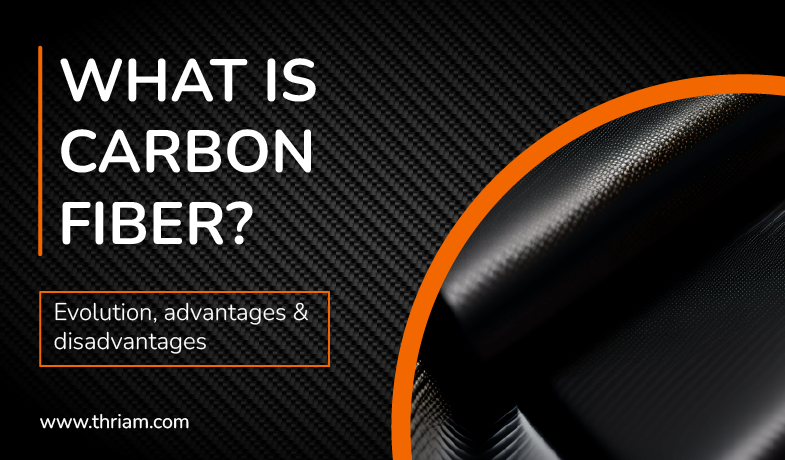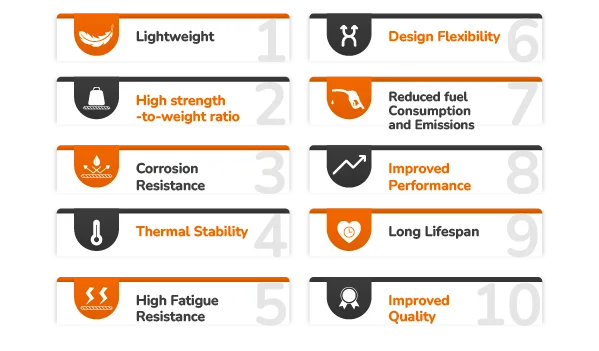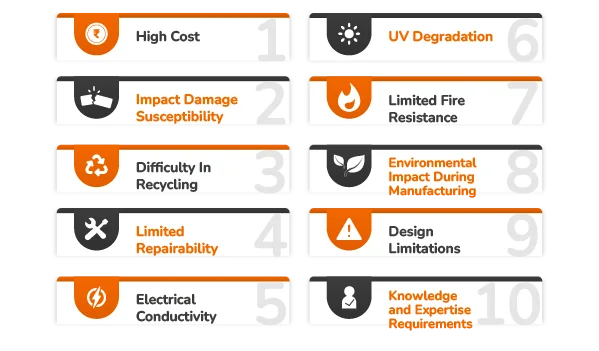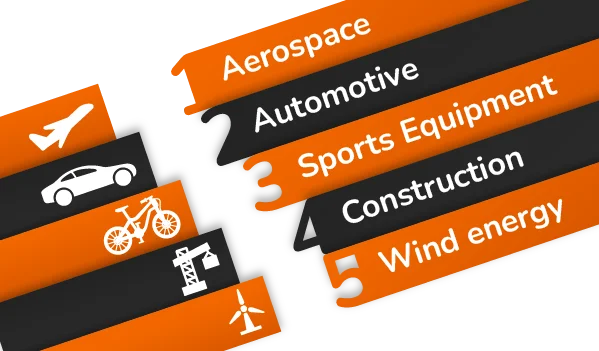Unveiling the Marvels of Carbon Fiber: Invention, Advantages, and Disadvantages

Introduction:
Carbon fiber is a remarkable material that has gained significant attention and popularity in various industries due to its exceptional properties and versatility. In this blog, we will delve into the world of carbon fiber, exploring its composition, manufacturing process, and significant advancements since its invention. We will also explore the advantages of carbon fiber and the revolution it has brought to industries such as aerospace, automotive, sports, and construction. However, we will also address the disadvantages and challenges associated with its usage. Let's uncover the marvels of carbon fiber together!
Understanding Carbon Fiber:
Carbon fiber is a composite material made up of carbon atoms, arranged in a specific pattern, resulting in its extraordinary strength and lightness. We will explain the composition of carbon fiber, highlight its unique structure, and shed light on the manufacturing process that sets it apart from traditional materials.
The Invention of Carbon Fiber:
The journey of carbon fiber began with remarkable inventors and researchers who pioneered its development. We will explore the history and the key players behind the invention of carbon fiber, along with the revolutionary breakthroughs that led to its commercial production and widespread use.
Advantages of Carbon Fiber:

- Lightweight: Carbon fiber is five times lighter than steel and two times lighter than aluminum, making it an excellent choice for applications where weight reduction is critical.
- High strength-to-weight ratio: Carbon fiber is incredibly strong, providing a high strength-to-weight ratio that makes it ideal for industries such as aerospace and automotive, where durability and safety are crucial.
- Corrosion resistance: Unlike traditional metals, carbon fiber is highly resistant to corrosion and rust, making it an excellent material for applications in harsh environments and chemical industries.
- Thermal stability: Carbon fiber is an excellent thermal conductor and provides excellent heat resistance, making it ideal for applications such as creating heat shields and exhaust systems in high-performance vehicles and aerospace.
- High fatigue resistance: Carbon fiber material does not experience the same fatigue as metals. It means that even under repeated stress, the carbon-fiber structure can maintain its mechanical properties over a long time, providing greater durability and reliability to the product.
- Design flexibility: Carbon fiber is a versatile material that can be crafted into different shapes and sizes as per the precise needs of the respective industry. The material flexibility often offers complex geometries, which could lead to a lightweight and high-strength structure.
- Reduced fuel consumption and emissions: By using lightweight carbon fiber composites in vehicles, their overall weight can significantly reduce, which results in lower fuel consumption, subsequently reducing greenhouse gas emissions.
- Improved performance: The high strength, stiffness, and lightweight properties of carbon fiber composites can enhance the performance of sports gear, aircraft, and automobiles.
- Long lifespan: Carbon fiber composites are known for long-lasting durability, even in harsh environments and extreme conditions. Its long lifespan lessens maintenance expenses and downtime.
- Improved quality: Carbon fiber material and the manufacturing process offer precise control over the material uniformity and fiber placement, allowing for greater consistency and quality in the final product, making it an ideal material for the aerospace and military sectors.
Disadvantages of Carbon Fiber:

- High cost: Carbon fiber production involves complex manufacturing processes and expensive raw materials, making it a costly material compared to traditional materials like steel or aluminum.
- Impact damage susceptibility: While carbon fiber is incredibly strong, it can be susceptible to impact damage. A single impact can cause cracks or delamination in the structure, weakening its integrity.
- Difficulty in recycling: Carbon fiber composites are challenging to recycle due to their complex composition. Current recycling methods are limited, leading to environmental concerns and the potential accumulation of waste.
- Limited repairability: Unlike metals, repairing damaged carbon fiber components can be a complex and expensive process. Extensive damage may require complete replacement rather than repair, adding to the cost.
- Electrical conductivity: Carbon fiber is electrically conductive. While this can be an advantage in some applications, it may cause issues in others where electrical conductivity needs to be controlled or isolated.
- UV degradation: Carbon fiber composites can experience degradation when exposed to prolonged sunlight or UV radiation. Protective coatings or finishings may be required to prevent UV-induced damage and maintain the material's integrity.
- Limited fire resistance: Carbon fiber is combustible and burns at a higher temperature than metals. Fireproofing measures or the addition of flame retardants may be necessary to enhance its fire resistance properties.
- Environmental impact during manufacturing: The manufacturing process of carbon fiber involves the use of chemicals and high-energy consumption, which can have an environmental impact. However, advancements are being made to reduce the environmental footprint of carbon fiber production.
- Design limitations: Carbon fiber composites have certain design limitations compared to traditional materials. For example, they may not be suitable for applications requiring complex molding or forming processes.
- Knowledge and expertise requirements: Working with carbon fiber requires specialized knowledge and expertise due to its unique properties and manufacturing processes. This can limit its widespread use in industries that lack the necessary expertise or infrastructure.
Five use cases of carbon fiber:

- Aerospace: Carbon fiber is widely used in the aerospace industry for the construction of aircraft components such as wings, fuselage, and tail sections. Its lightweight nature and high strength-to-weight ratio help reduce fuel consumption and increase aircraft performance.
- Automotive: Carbon fiber has made a significant impact on the automotive industry, particularly in high-performance vehicles and racing cars. It is used in the manufacturing of body panels, chassis components, and interior parts to reduce weight, increase stiffness, and improve handling.
- Sports equipment: Carbon fiber is extensively used in sports equipment such as tennis rackets, golf clubs, bicycles, and hockey sticks. It provides enhanced performance, allowing athletes to generate more power, control, and accuracy due to its lightweight and high-strength properties.
- Construction: Carbon fiber-reinforced polymers (CFRP) are increasingly being used in construction applications. It is used for strengthening structural elements such as beams, columns, and bridges. CFRP composites offer high strength, durability, and resistance to weather conditions, making them suitable for seismic retrofitting and other infrastructure improvements.
- Wind energy: Carbon fiber is employed in the manufacturing of wind turbine blades due to its strength and lightweight nature. By reducing the weight of the blades, turbines can capture more wind energy, making wind power generation more efficient and cost-effective.
Conclusion
In conclusion, carbon fiber stands as a marvel of modern material science, offering unparalleled strength, lightness, and versatility. Through its invention, it has transformed industries and opened up exciting possibilities for the future. While its advantages are extraordinary, we must also acknowledge its disadvantages and work towards overcoming those challenges. The future of carbon fiber holds immense potential for advancements and applications that will continue to shape our world in remarkable ways. Let us embrace the marvels of carbon fiber and the endless possibilities it presents.



